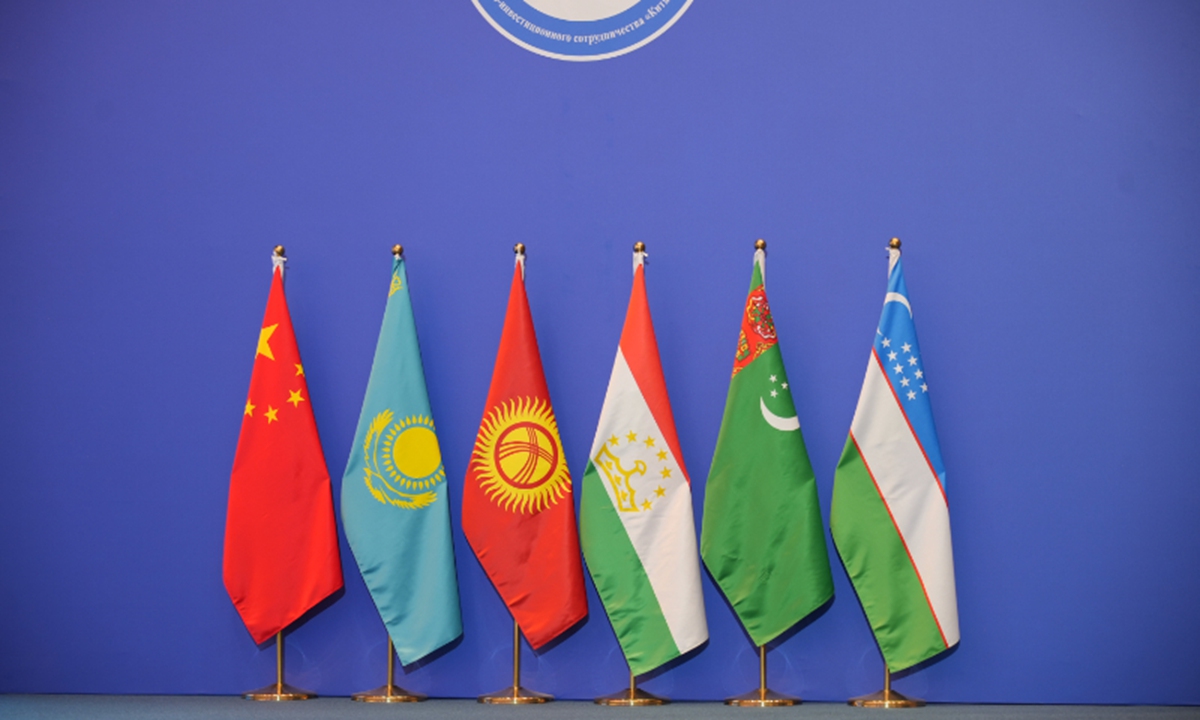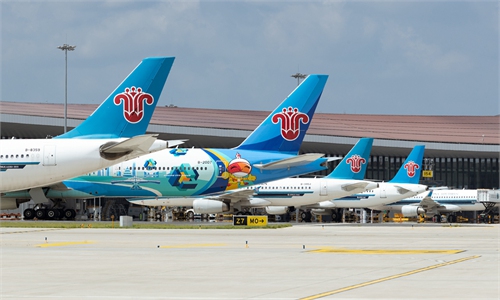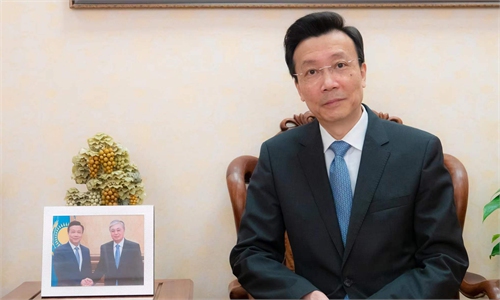
China + Central Asia (C+C5) Photo: VCG
The leaders of the five Central Asian countries will travel to China later this week to attend the China-Central Asia Summit that is set to take place in Xi'an, capital of Northwest China's Shaanxi Province, on Thursday and Friday.The event marks a milestone in the development of relations between China and the five Central Asian countries. Since the establishment of diplomatic ties 31 years ago, China-Central Asia relations have achieved fruitful results in multiple fields, of which economic and trade cooperation is one that has witnessed particularly fast progress and promises great potential. This is also why there have been high expectations that the summit will help boost regional economic cooperation between all sides.
At present, the Central Asian region is undergoing a critical period of change. On the one side, some countries such as Uzbekistan and Kazakhstan experienced power change and domestic political reform in recent years, which sometimes even led to political turmoil. On the other side, the US-led sanctions against Russia have also triggered concerns and need among Central Asian countries as to how to avoid second sanctions while preventing their economies from being affected.
Indeed, after three decades of development and against the backdrop of great changes in world politics and economy, Central Asian countries are also eager to seek ways to forge a pathway to better economic development and modernization.
Given the important geographic locations of Central Asian countries, the region's peace and stability is of strategic importance to China. For example, Kazakhstan is an important hub for China-Europe trade.
Stable economic development has always been the essential foundation for political stability, therefore China has been actively developing economic and trade ties with the five Central Asian countries.
Over the past three decades, China saw its trade with the five Central Asian countries increase by more than 100-fold, essentially becoming one of the most important trade and investment partners for the region. In 2022, trade between China and the five countries reached a record high of $70.2 billion. Meanwhile, China's imports of agricultural, energy and mineral products from the Central Asia rose by more than 50 percent year-on-year, while its exports of mechanical and electrical products to the five countries went up 42 percent, representing a more optimized trade structure between all sides. As of the end of March this year, China's direct investment stock in the five Central Asian countries exceeded $15 billion.
Moreover, the Belt and Road Initiative (BRI) has also injected new momentum into China-Central Asia relations. The Central Asian region covers several key connection points under the BRI implementation, with several major BRI routes running through the region. Under the BRI framework, a number of cooperative infrastructure projects have been realized for the benefits of local communities across the region.
For instance, under a cooperation project between China and Uzbekistan, the longest tunnel in Central Asia, the 19.2-kilometer-long Qamchiq Tunnel, was completed in June 2016 to connect the Angren-Pap railway, which provides a direct link between Toshkent and the Ferghana Valley.
Also, Chinese companies have developed a number of energy and power projects in Central Asian countries over the year, greatly improving the poor power generation infrastructure in the region and offering support to local industrial production.
The reason why all sides are able to achieve practical cooperation under the BRI framework and in other areas is because the countries are sharing common interests in areas such as regional security and stability, economic prosperity and development, among others. And their cooperation has always been based on win-win results and common development. It is the concept of equality and mutual benefits that unites China and Central Asian countries, which is in stark contrast to the way the US applies to rope in allies and form small circles in geopolitical games under the banner of cooperation.



